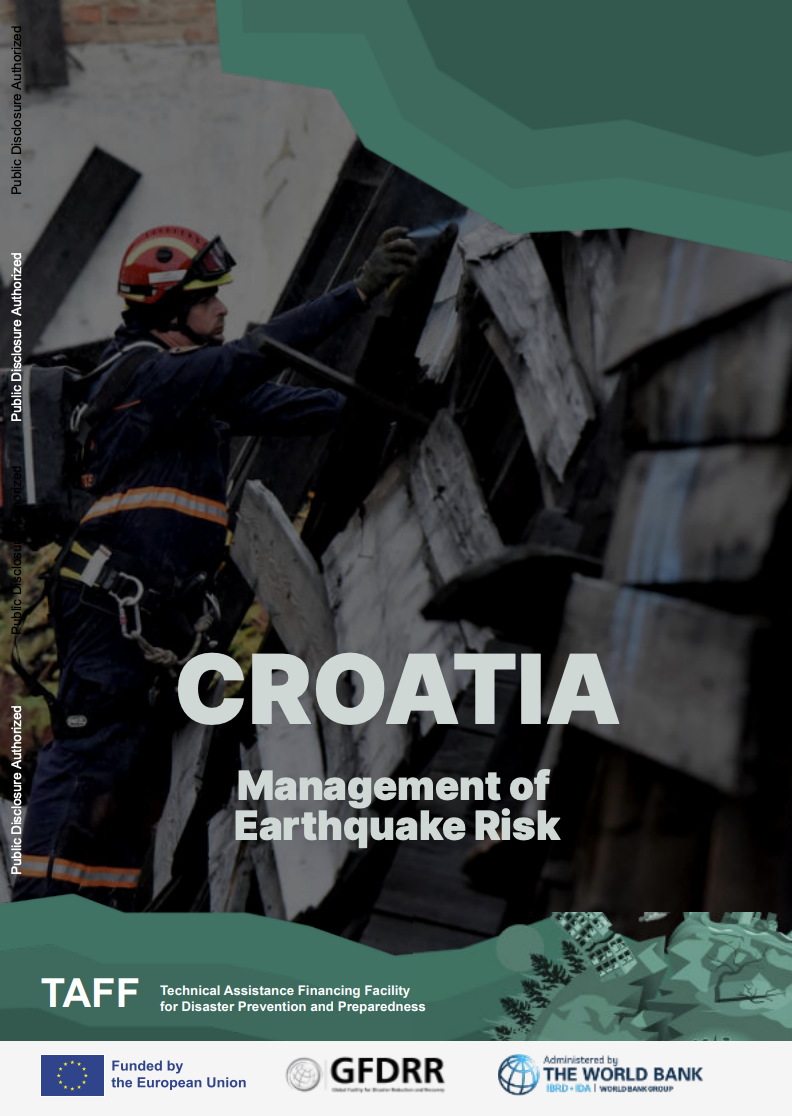Croatia faces significant earthquake risk due to its moderate to high seismic activity and its vulnerable, aging buildings and other infrastructure. Although earthquakes are comparatively rare in Croatia, they nonetheless pose considerable risk. In 2020, amid the COVID-19 pandemic, the country experienced a series of earthquakes, some of the strongest since 1880: earthquakes in March (M5.5) and December (M6.2) caused an estimated Euro 16.1 billion in damage and economic losses, according to the Rapid Damage and Needs Assessments (RDNAs) carried out in their aftermath.10 The reconstruction and recovery needs were extensive, with estimated costs of Euro 25.9 billion (Euro 17.5 billion for the March earthquake and Euro 8.4 billion for the December earthquake). These recent events highlight the urgent need to proactively manage earthquake risk. This report summarizes the results of a rapid review of earthquake risk and risk management capacity in Croatia, highlighting potential risk management actions and investment opportunities to inform policy dialogue and future research. The review considers capacity across multiple dimensions, including governance, understanding of earthquake risk, risk reduction and mitigation, early warning and public awareness, preparedness and emergency response, recovery and post-disaster financing, and cross-cutting topics such as social resilience and the role of the private sector. For each of these dimensions, the report draws on available information to review the general context and current situation, including key challenges and opportunities for improvement relevant to Croatia.

